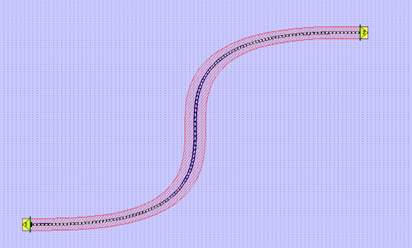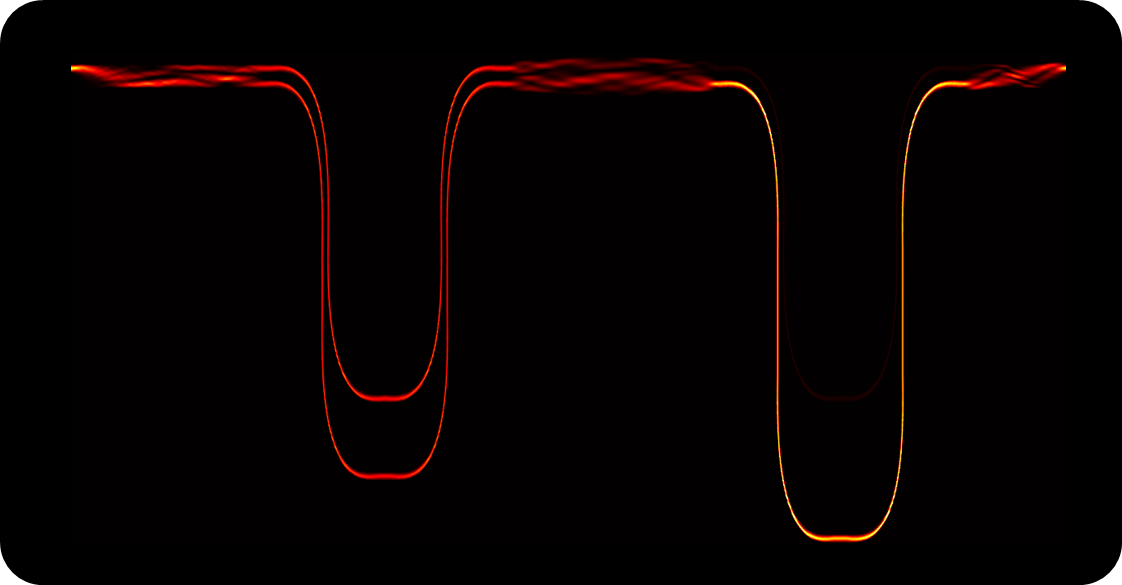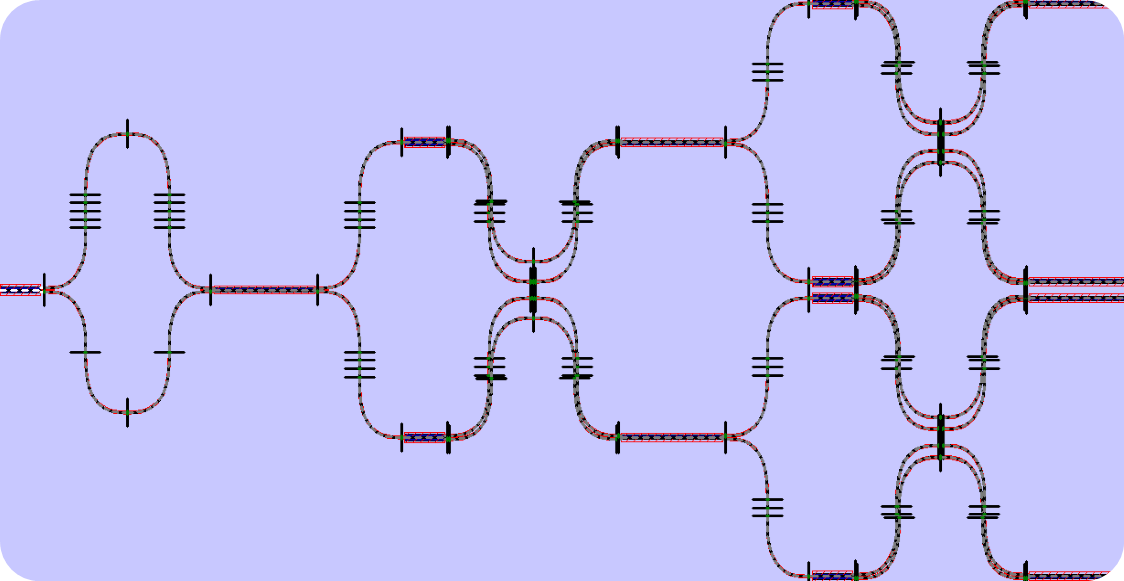MT-FIMMPROP
A revolution in Photonic Integrated Circuit Modeling EME. Cutting-edge software that uses the EME method (Eigenmode Expension) to simulate propagation calculations of large-scale photonic integrated circuits.
Request a Demo
Multi-Topology (MT) FIMMPROP is a new innovative design environment from Photon Design. Combining the roles of layout and simulation, MT-FIMMPROP does away with the frustrating need to shuttle between two design environments when designing PICs.
Applications:
- MZI (Mach-Zehnder Interferometer)
- Large ring resonator
- Optical performance evaluation of the entire PIC
- Component design
- Layout design
- Device simulation

Photonics component modeling, circuit simulation, & layout/mask generation in one software!

- Flexible layout editor
- Equipped with a scanner interface that allows you to easily scan design parameters
- Complete PIC simulation with actual design layout
- GDSⅡ data export
Modeling a long arm Mach-Zehnder Interferometer


Long-arm Mach-Zehnder Interferometers (MZIs) are an example of the type of structures that can now be modeled efficiently and accurately using MT-FIMMPROP.
MT-FIMMPROP is used to model an interleaver design proposed by Cherchi et al. that is based on cascaded MZIs and multimode interferometers (MMIs) as power splitters.
Using the built-in scanner, we can obtain the response of the device shown to the right. The results show that the design has a flat-top response, improving on the sinusoidal response of a simple MZI design.

Modeling a large ring resonator
Large ring resonators are a good example where it is significantly
more efficient to use a simulation technique that defines computational regions
that conform to the waveguides in the device.
The double ring resonator example shown in this picture (radius: 30um) is modeled using only the red hashed computational regions. Therefore, we avoid having to unnecessarily include the large areas in the center of the rings in the computation.

An added advantage is that using computational regions that conform to the waveguides means that the number of modes required in each computational region is minimised.
Furthermore, this simulation also takes advantage of MT-FIMMPROP’s ability to re-use s-matrices of repeated components to improve efficiency. The bus-ring coupling region only has to be calculated once.


Scanning over the wavelength using the built-in scanner interface, we can look at the transmission from the port at the top left of the device to the port at the bottom left and the coupling from the port at the top left to the port at the bottom right.
This picture shows the plot of the Hy field through the whole device at 1.55262um wavelength when injecting mode 1 into the port at the top left.
MT-FIMMPROP Examples

Long-Arm Mach-Zehnder Interferometer (MZI)
MT-FIMMPROP is used to model an interleaver design proposed by Cherchi et al. based on cascaded MZIs and multimode interferometers (MMIs) as power splitters.
M. Cherchi et al,
Flat-top interleavers based on single MMIs, (2020)
Cascaded MMIs / Optical Phased Arrays
It is probably the dream of any amateur astronomer to be able to be the boss of one of the great multi million dollar telescopes even if it was just for one hour or for a few shots. Sure, we can have a lot of fun with our binoculars.


Cascaded MZI Wavelength Filters
MT-FIMMPROP is used to model cascaded Mach-Zehnder wavelength filters. Suitable for application as WDM demultiplexers.
Delay Lines
MT-FIMMPROP is used to model delay lines constructed using constant bend and straight sections. This example has a physical path length of ~11 cm and yet simulates in <10s. MT-FIMMPROP is the first way to visualize field profiles of delay lines of this scale in a viable amount of time.


